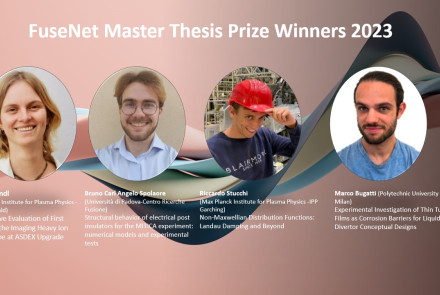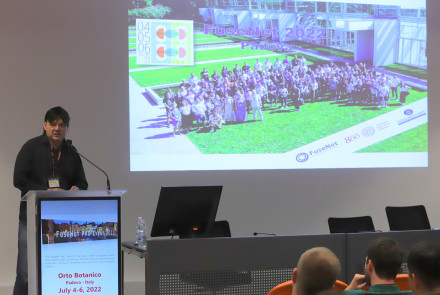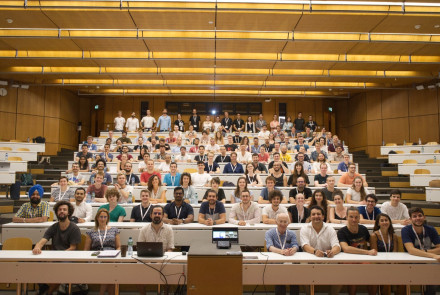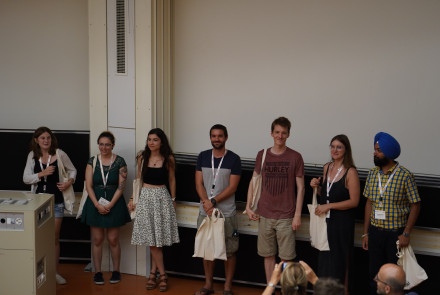Student-built Fusor produces first neutrons
The first measurements of neutrons were made last month in a new fusor device that was built at the Eindhoven University of Technology in the Netherlands. With a Deuterium plasma, the fusor produced just less than a million neutrons per second.
Students have taken an active role in the design and construction of this new Farnsworth–Hirsch type of fusor, that was built with support of FuseNet - as part of the hardware developements in Work Package 7.
[[{"type":"media","view_mode":"media_original","fid":"894","attributes":{"alt":"TU/e Fusor Device","class":"media-image","height":"282","id":"2","style":"height: 282px; width: 480px;;;;;;;;;;;","typeof":"foaf:Image","width":"480"}}]]
Photo: While producing almost 106 neutrons neutrons per second, the inside of the TU/e's fusor shows the so-called star mode, characterized by glowing plasma and rays that appear to escape through gaps in the glowing spherical inner grid.
Electrostatic confinement
The fusor is an Inertial Electrostatic Confinement fusion device. It can create fusion reactions by accelerating ions by means of an electrostatic field. The electric field is generated by two concentric spherical electrodes, of which the inner one is mostly transparent and strongly negatively charged. The ions are accelerated inwards and most will pass the transparent electrode. After the electrode, they continue converging inwards, creating a high density of high energy ions in the center of the fusor. Collision with each other or with neutral background gas particles then results in fusion reactions.
This simple concept to produce fusion reactions makes the fusor an ideal device for educational purposes, to demonstrate fusion plasmas, ion confinement and fusion diagnostics. The construction of the fusor was co-funded by FuseNet and we used this opportunity to let students take an active role in the design and construction work as well. Hands-on experience for students, in line with the description and ideas outlined in Work Package 7.
Goal-oriented education: optimizing the fusion performance
[[{"type":"media","view_mode":"media_large","fid":"898","attributes":{"class":"media-image","height":"267","id":"1","style":"height: 267px; width: 200px; float: right; margin: 5px;;;;;;;;","typeof":"foaf:Image","width":"200"}}]]We gave students the assignment to design a fusor, with the aim to understand the underlying principles and processes and to optimize the fusion performance. To this last goal - maximizing the neutron production - several studies are currently performed on the fusor.
The ion density profile is measured by passive spectroscopy to investigate the influence of the operating parameters. Electric potential measurements are performed by using Langmuir probes and emissive probes are used to investigate the influence of space charge on the vacuum potential. As the potential determines the ion energies, i.e. the fusion probability, and the ion density improves the collision probability, both projects are essential to improve the fusion rate. Furthermore, we are trying to better understand specific fusor phenomena, such as star and jet mode, e.g. by investigating the effects of electrode asymmetries.
A videocamera is looking through the circular window of the vacuum vessel of the fusor. During the discharge the fusor was operated with a Deuterium gas at a pressure of 2.4E-3 mbar. The voltage at the fusor grid was -43 kV and with a current of 30 mA this was enough to produce just below 106 neutrons per second.
Besides in education and research, the fusor will also be used in training courses for students in conjunction with the PlasmaLab @ TU/e, where students can gain more hands-on experience and learn to use the hardware.






